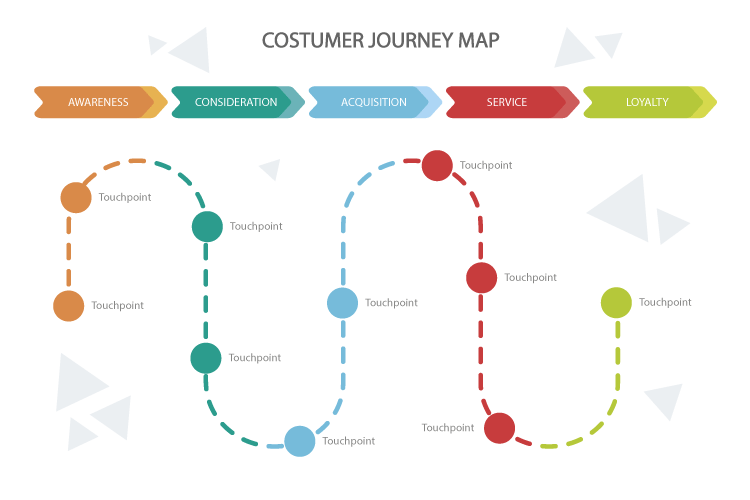How Can You Analyze Customer Feedback
Customer feedback is a goldmine of insights that can help businesses understand their customers better, identify areas for improvement, and make data-driven decisions. How can you analyze customer feedback? However, analyzing customer feedback effectively can be a challenging task.
In this article, we will explore the various techniques and strategies businesses can use to analyze customer feedback. From sentiment analysis to text mining, we will delve into different methods that can uncover valuable information and empower businesses to take actionable steps based on customer insights.
Importance of Analyzing Customer Feedback
Understanding how you can analyze customer feedback is a crucial aspect of any business looking to improve customer satisfaction levels and make better strategic decisions. Not only does it provide valuable insights into customer expectations and preferences, but it also helps businesses to identify gaps in their products or services and make necessary improvements. Here are some key reasons why analyzing customer feedback is important:
- Enhancing customer experience: By analyzing feedback, businesses can understand what customers like or dislike about their products or services. This allows them to make improvements and tailor their offerings to meet customer expectations, ultimately enhancing the overall customer experience.
- Identifying areas for improvement: Customer feedback often highlights areas where a business may be falling short. By analyzing this feedback, businesses can identify specific pain points or issues that must be addressed. This enables them to make necessary changes and improve their processes, products, or services.
- Building customer loyalty: When customers feel heard and valued, they are more likely to develop a sense of loyalty towards a brand. Analyzing customer feedback allows businesses to address any concerns promptly, leading to increased customer satisfaction and loyalty.
- Spotting trends and patterns: Analyzing customer feedback helps identify recurring themes or patterns in customer opinions. This can provide valuable insights into emerging trends, customer preferences, or potential market opportunities. Businesses can then adapt their strategies accordingly to stay ahead of the competition.
- Making data-driven decisions: Customer feedback provides businesses with real-world data on customer preferences, needs, and expectations. Businesses can make informed decisions on product development, marketing strategies, and customer service initiatives by analyzing this data.
- Improving communication and transparency: Actively listening to customer feedback and taking it into account demonstrates a commitment to open communication and transparency. It shows customers that their opinions matter and can help foster trust and goodwill between a business and its customers.
Support Genix
WordPress Support Ticket Plugin
Take Your Customer Support to The Next Level and Boost Customer Satisfaction Rates
Ways of How Can You Analyze Customer Feedback

Customer feedback analysis is an essential aspect of any business. Knowing how customers feel about the products and services you offer helps you make better decisions and improve the overall experience for your customers. So, how can you analyze customer feedback?
Sentiment Analysis
As businesses continue to prioritize the customer experience, feedback analysis has become a critical component of any successful strategy. One way to analyze customer feedback is through sentiment analysis. By using natural language processing algorithms, sentiment analysis can categorize feedback as positive, negative, or neutral, helping businesses gain a better understanding of overall customer sentiment.
This technique allows companies to pinpoint areas where they’re excelling and identify areas that may require improvement. Ultimately, sentiment analysis empowers businesses to make informed decisions and better serve their customers.
Text Mining
Customer service is an integral part of any business, and it is essential to understand how your customers feel about your products or services. One of the ways you can achieve this is by analyzing customer feedback. With text mining, you can sift through the unstructured data and extract valuable insights that can help improve your customer service.
Data mining, machine learning, and NLP techniques are used to identify patterns, themes, and relationships within customer feedback. By understanding what your customers are saying, you can take proactive measures to address their concerns and improve your customer service. Investing in text mining can help you stay ahead of the competition and build a loyal customer base.
Categorization and Tagging
One of the best ways to understand customer feedback is through categorization and tagging. This approach is particularly useful as it allows businesses to organize and classify feedback based on specific customer service topics. By doing so, they can quickly identify recurring issues and implement strategies to address them. With this method, companies can always strive to provide the best possible customer service experiences while also building strong relationships and loyalty with their customers.
Thematic Analysis
Gathering feedback from customers is crucial for businesses to enhance their products and services. But how can you analyze customer feedback? Thematic analysis is a powerful way for businesses to get insightful data on what their customers are saying.
By clustering similar feedback and identifying themes, businesses can gain a deeper understanding of what their customers are experiencing, their preferences, and overall sentiments. This helps businesses to get to the root of the issue and address it effectively.
Thematic analysis is effective as it provides a clear picture of what the customers feel about the business’s product or service. Through this analysis, businesses can use this data to improve their products and services and, in return, lead to an even greater level of customer satisfaction.
Quantitative Analysis
Listening to customers is an essential practice for every business, but it’s not enough to only listen. You also need to analyze their feedback. Customer feedback data can be analyzed both quantitatively and qualitatively. When it comes to quantitative analysis, statistical methods are applied to understand patterns, trends, and correlations among various variables in your customer feedback data.
This requires calculating averages, performing regression analysis, and other similar techniques. By applying such methods, you can map out the customer journey and identify key moments that influence your customers’ experience. Ultimately, this analysis can help improve your business operations and drive customer loyalty.
Customer Journey Mapping

To ensure customer satisfaction, businesses need to be attentive to their needs and feedback. One effective method for analyzing customer feedback is through customer journey mapping. By analyzing feedback at different touchpoints along the customer’s journey, businesses can gain a better understanding of the overall experience and identify areas that need improvement.
This not only enhances customer satisfaction but also helps businesses create a better customer experience overall. With customer journey mapping, businesses can tap into the valuable insight and feedback of their customers to create meaningful changes that improve customer satisfaction and loyalty.
Net Promoter Score (NPS)
Another effective way of measuring customer satisfaction is through the use of the Net Promoter Score (NPS). This widely used metric is a quantitative measure of customer sentiment, providing businesses with valuable insights into how likely customers are to recommend their product or service to others.
By analyzing customer feedback and monitoring their loyalty, companies can identify the areas for improvement and develop more targeted strategies for enhancing customer satisfaction. Using NPS, businesses can understand customer needs, tailor their approach, and deliver a personalized experience for repeat customers.
Qualitative Analysis
In order for businesses to truly understand their customer base, conducting qualitative analysis is a critical step. This feedback analysis method comprehensively evaluates individual customer responses, providing organizations with a deeper understanding of customer experiences.
Through the extraction of more detailed insights, qualitative data provides businesses with a more informed understanding of customer emotions and specific pain points. With this information, companies are able to strategize more effectively and implement initiatives that are not only focused on customer needs but also aligned with their overall goals.
Social Media Listening
When it comes to understanding customer feedback, social media listening has become an essential strategy for businesses to gain real-time insights into customer opinions and brand reputation. Monitoring social media platforms allows companies to analyze and categorize qualitative data on customer satisfaction, product feedback, and grievances from various social media channels.
Businesses can use social media listening tools to analyze customer feedback and identify trends, ultimately improving their products or services and enhancing the customer experience. It is a great way to stay ahead of the competition and build a strong relationship with customers.
Customer Feedback Surveys
In today’s ultra-competitive business world, companies must actively seek feedback from their customers to stay ahead of the competition. One of the most effective ways of doing this is through customer feedback surveys. This powerful tool allows businesses to collect structured feedback to improve customer satisfaction, identify areas for improvement, and gauge overall customer sentiment.
With the help of survey data analysis, companies can gain valuable insights into the needs, wants, and pain points of their customers, adapting their approach and taking proactive steps to improve customer retention and loyalty. By making customer feedback a top priority, businesses can create a customer-centric culture and stay ahead of the curve.
Support Genix
WordPress Support Ticket Plugin
Take Your Customer Support to The Next Level and Boost Customer Satisfaction Rates
Final Thoughts
Analyzing customer feedback is an essential practice to help businesses understand their customers’ needs and improve their services. But how can you analyze customer feedback? There are several approaches to analyzing customer feedback, from manual methods, such as reading through comments and reviews, to automated techniques like sentiment analysis. When analyzing feedback, it’s vital to look for common themes and patterns, both positive and negative.
Combining quantitative and qualitative data can offer a more holistic view of customer feedback. Additionally, organizations should prioritize taking action on customer feedback, as it can lead to improved customer experiences and loyalty. Overall, knowing how to analyze customer feedback can help businesses stay relevant and competitive in a constantly evolving market.